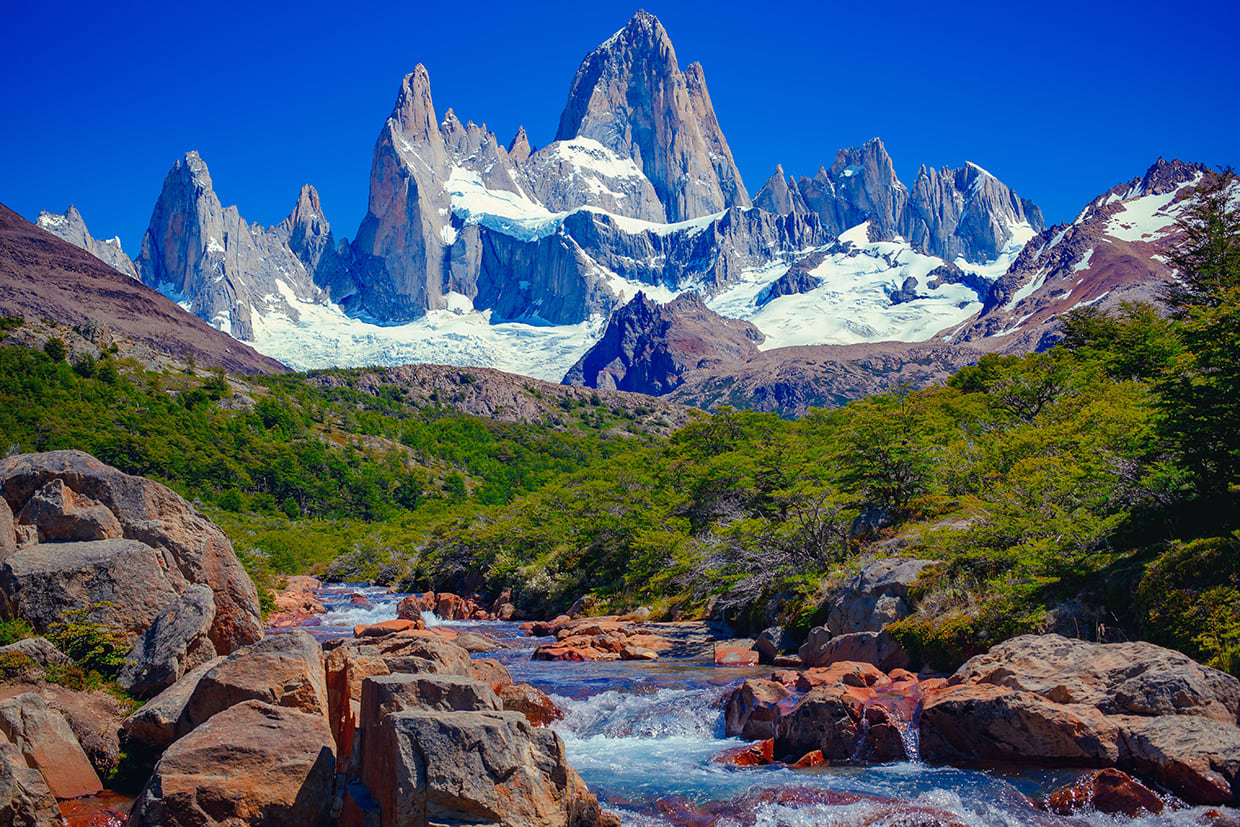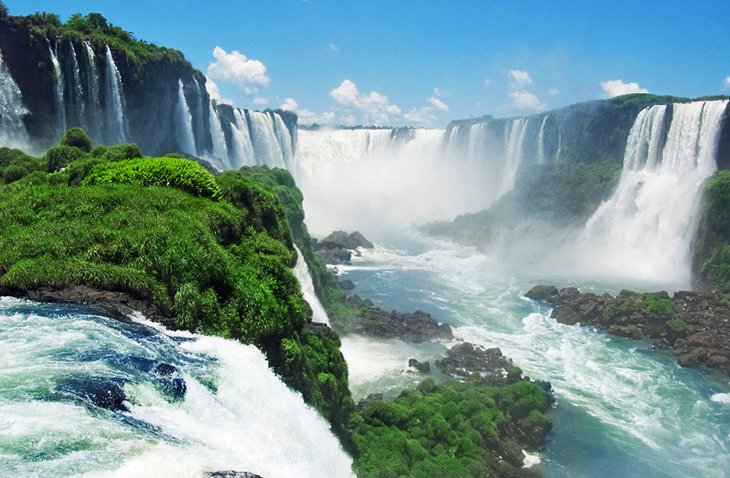
Argentina, a South American gem, is a land of breathtaking contrasts. From the icy grandeur of Patagonia to the vibrant tango rhythms of Buenos Aires, and the majestic Iguazu Falls to the windswept plains of the Pampas, this vast nation offers an unforgettable tapestry of experiences for every traveler. Its rich history, passionate culture, and diverse natural beauty combine to create a destination that truly captivates the soul.
Top Attractions: A Journey Through Argentina’s Wonders
Argentina’s allure lies in its remarkable diversity. Here are some of its most celebrated attractions that promise to leave an indelible mark on your memory:

Related Articles about Argentina: A Symphony of Landscapes, Culture, and Adventure:
- A Traveler’s Guide to Surabaya: Discovering the Soul of Indonesia’s City of Heroes
- Discover Denmark: A Guide to Hygge, History, and Happening Adventures
- Hong Kong: A Symphony of Skyscrapers, Spice, and Soul
- Fiji: An Archipelago of Dreams – Your Ultimate Guide to Paradise
- Thailand’s Crown Jewels: A Guide to Unforgettable Stays and Experiences
1. Iguazu Falls: A UNESCO World Heritage site, Iguazu Falls is not merely a waterfall; it’s a thunderous spectacle of nature’s raw power and beauty. Straddling the border between Argentina and Brazil, the Argentine side offers an intimate and immersive experience. The park boasts a network of walkways and train rides that bring you incredibly close to the cascading water. The "Devil’s Throat" (Garganta del Diablo) is the undisputed star, a U-shaped chasm where the Iguazu River plunges with immense force, creating a deafening roar and a perpetual mist. Exploring the upper and lower circuits allows you to witness the falls from various vantage points, feeling the spray on your face and marveling at the sheer scale of this natural wonder. Boat trips beneath the falls offer an exhilarating, albeit damp, perspective.
2. Buenos Aires: The Paris of South America: The pulsating heart of Argentina, Buenos Aires is a city that dances to its own rhythm. Its European-inspired architecture, grand boulevards, and passionate culture create an atmosphere that is both sophisticated and intoxicating. The iconic Plaza de Mayo is the historical and political center, where you can witness the iconic Casa Rosada, the presidential palace. Explore the colorful streets of La Boca, particularly the vibrant Caminito, a pedestrian street museum adorned with brightly painted buildings and street performers. Immerse yourself in the bohemian charm of San Telmo, renowned for its antique markets, tango shows, and historic cobblestone streets. For art lovers, the MALBA (Latin American Art Museum of Buenos Aires) and the Museo Nacional de Bellas Artes (National Museum of Fine Arts) are must-visits. And, of course, no trip to Buenos Aires is complete without experiencing a passionate tango performance, whether in a traditional milonga or a professional show.
3. Patagonia: A Realm of Ice and Majesty: Stretching across the southern tip of South America, Argentine Patagonia is a land of unparalleled natural grandeur.
- Perito Moreno Glacier: Located within Los Glaciares National Park, this colossal glacier is one of the few advancing glaciers in the world. Witnessing its immense ice walls calve, sending colossal icebergs crashing into the turquoise waters of Argentino Lake, is an awe-inspiring experience. Boat tours offer close-up views, and walkways provide panoramic vistas. For the truly adventurous, glacier trekking and ice-hiking tours are available.
- El Chaltén: Trekking Capital of Argentina: Nestled at the base of the iconic Fitz Roy Massif, El Chaltén is a hiker’s paradise. Trails cater to all levels, from gentle strolls to challenging multi-day treks. The hike to Laguna de los Tres offers the most iconic view of Fitz Roy, its jagged peaks reflected in the pristine lake. Other popular hikes include the trek to Laguna Torre and the Loma del Pliegue Tumbado.
- Ushuaia: The End of the World: The southernmost city in the world, Ushuaia is a gateway to Antarctica and a hub for exploring the Beagle Channel. Take a boat trip to see sea lions, cormorants, and penguins, and visit the Les Eclaireurs Lighthouse, often mistakenly called the "Lighthouse at the End of the World." Explore Tierra del Fuego National Park, with its stunning coastal scenery and diverse wildlife.
4. The Andes Mountains and Wine Regions: Argentina’s Andean spine offers breathtaking landscapes and world-class wine.

- Mendoza: The Land of Malbec: Renowned globally for its Malbec wine, Mendoza is a must-visit for oenophiles. Surrounded by the snow-capped Andes, this region boasts picturesque vineyards, charming bodegas (wineries), and opportunities for wine tasting and tours. Beyond wine, Mendoza offers adventure activities like hiking, horseback riding, and skiing in the winter months.
- Bariloche and the Lake District: Known as the "Switzerland of South America," Bariloche is a charming town set amidst stunning lakes and snow-capped mountains. It’s a year-round destination, offering hiking, kayaking, and fishing in the summer, and skiing and snowboarding at Cerro Catedral in the winter. The scenic Route of the Seven Lakes is a breathtaking drive, connecting picturesque towns and offering stunning vistas.
5. Salta and the Northwest: This region offers a distinct cultural experience, with dramatic desert landscapes, colonial towns, and indigenous traditions.
- Salta City: Known as "Salta la Linda" (Salta the Beautiful), this elegant city boasts well-preserved colonial architecture, including the stunning Cathedral and the Cabildo.
- The Quebrada de Humahuaca: A UNESCO World Heritage site, this narrow mountain valley is a geological marvel, characterized by colorful rock formations like the Hill of Seven Colors in Purmamarca and the Paleta del Pintor (Painter’s Palette) in Maimará.
- Cafayate: Another important wine region, Cafayate is known for its Torrontés white wine. Explore its vineyards and charming town square.
A Glimpse into Argentina’s Rich History
Argentina’s history is a complex tapestry woven with indigenous cultures, colonial rule, and waves of European immigration. The land was inhabited by various indigenous groups for millennia before the arrival of the Spanish in the 16th century. Buenos Aires was founded in 1536, though it was later abandoned and re-established.
The country gained independence from Spain in 1816, with José de San Martín playing a pivotal role as a liberator. The 19th century saw significant European immigration, particularly from Italy and Spain, shaping Argentina’s culture, language, and cuisine. This era also witnessed periods of political instability and civil unrest.
The 20th century brought both prosperity and turmoil. The rise of Juan Domingo Perón and his wife Eva Perón (Evita) in the mid-20th century had a profound impact on Argentine society, introducing social welfare programs and a populist political movement that continues to resonate today. The country also endured periods of military dictatorships, most notably the "National Reorganization Process" from 1976 to 1983, a dark chapter marked by human rights abuses.
Argentina’s history is a testament to its resilience, its vibrant spirit, and its ongoing journey of self-discovery.
Travel Tips for an Unforgettable Argentine Adventure
- Visa Requirements: Check the visa requirements for your nationality well in advance. Many nationalities can enter Argentina visa-free for tourism purposes for up to 90 days.
- Currency: The official currency is the Argentine Peso (ARS). It’s advisable to carry some cash for smaller purchases, especially in more remote areas. Credit cards are widely accepted in larger cities and tourist establishments. Be aware of the fluctuating exchange rate and consider using services like "Western Union" for potentially better rates when exchanging money.
- Language: Spanish is the official language. While English is spoken in major tourist areas, learning a few basic Spanish phrases will greatly enhance your experience.
- Safety: Argentina is generally a safe country for tourists, but like any major destination, it’s important to be aware of your surroundings and take precautions against petty crime, especially in crowded areas.
- Tipping: Tipping is customary in restaurants (around 10% of the bill) and for other services like tour guides and hotel staff.
- Electricity: The standard voltage is 220V, and the frequency is 50Hz. Plugs are typically Type I (the same as Australia and New Zealand).
- Health: No specific vaccinations are mandatory for entry, but it’s always recommended to consult your doctor about recommended vaccinations and travel insurance. Drink bottled water, especially in smaller towns.
Accommodation Options: From Budget to Boutique
Argentina offers a diverse range of accommodation to suit every budget and preference:
- Hostels: A fantastic option for budget travelers and solo explorers, hostels are abundant in major cities and tourist hubs, offering dorm rooms and private rooms, social atmospheres, and organized activities.
- Hotels: From comfortable mid-range hotels to luxurious five-star establishments, you’ll find a wide selection across the country. Buenos Aires, in particular, boasts an impressive array of boutique hotels with unique character.
- Guesthouses (Hospedajes/Posadas): These offer a more intimate and personalized experience, often run by local families. They are a great way to immerse yourself in the local culture.
- Apartments and Vacation Rentals: Ideal for families, groups, or longer stays, renting an apartment can provide more space and the flexibility to cook your own meals. Websites like Airbnb are popular.
- Estancias: For a truly unique experience, consider staying at an estancia, a traditional Argentine ranch. These often offer horseback riding, cultural activities, and a taste of rural Argentine life.
Transportation: Navigating the Vastness
Argentina’s sheer size necessitates efficient transportation options:
- Flights: For long distances between major cities like Buenos Aires, Iguazu, Salta, and Ushuaia, flying is the most practical and time-efficient option. Aerolineas Argentinas and LATAM are the primary domestic airlines.
- Buses: Argentina has an extensive and comfortable long-distance bus network. Buses are a popular choice for inter-city travel, offering various classes of service, from standard to luxurious "cama" (sleeper) seats. They are a more economical option than flying.
- Trains: While not as extensive as the bus network, there are some notable train routes, particularly the scenic Patagonian trains like the "La Trochita" (Old Patagonian Express).
- Car Rental: Renting a car offers the most flexibility, especially for exploring regions like Mendoza or the Lake District at your own pace. Be prepared for long driving distances and varying road conditions.
- Taxis and Ride-Sharing: Taxis are readily available in cities, and ride-sharing apps like Uber operate in Buenos Aires and other major urban centers.
Best Time to Visit: Embracing the Seasons
Argentina’s vastness means that the "best time to visit" depends heavily on your chosen destinations and interests:
- Spring (September to November): This is a fantastic time to visit most of Argentina. The weather is pleasant, with blooming flowers and fewer crowds. Patagonia begins to thaw, making it ideal for hiking. Buenos Aires is vibrant, and the wine regions are beautiful.
- Summer (December to February): This is peak tourist season, especially in Patagonia and beach resorts like Mar del Plata. Expect warm to hot weather across the country. It’s a great time for outdoor activities but can be crowded and more expensive.
- Autumn (March to May): Another excellent time to visit, especially for wine enthusiasts as it’s harvest season in Mendoza. The fall foliage in regions like Bariloche is stunning. Patagonia’s weather is still generally good for hiking, with fewer crowds than in summer.
- Winter (June to August): This is the prime season for skiing and snowboarding in the Andes, particularly in Bariloche and Las Leñas. Northern Argentina remains pleasant, offering a reprieve from the cold. Patagonia’s southern regions experience harsh winter conditions, with many attractions and services closed.
In conclusion, Argentina is a destination that promises an adventure for every kind of traveler. Whether you’re drawn to the thundering power of Iguazu Falls, the sophisticated charm of Buenos Aires, the raw beauty of Patagonia, or the exquisite flavors of its wine country, Argentina offers an experience that is both exhilarating and deeply enriching. Prepare to be captivated by its diverse landscapes, its passionate culture, and the warmth of its people, and you’ll leave with memories that will last a lifetime.





